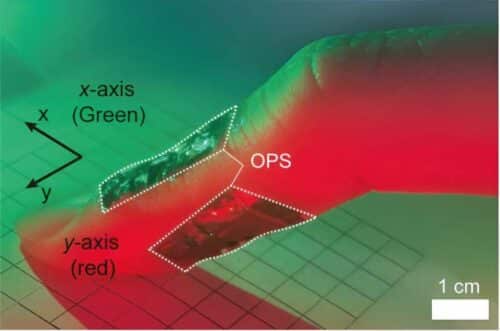A finger motion recognition system redefines human movement monitoring across various fields by tracking finger movements with 95% accuracy, even in low-light conditions.

Devices capable of identifying, monitoring, and deciphering movements in their vicinity may offer invaluable possibilities in robotics, healthcare, entertainment, sports, and more. Wearable sensors are especially proficient in recognizing and logging the actions of human individuals, as they can be placed strategically and capture finger movements with heightened precision.
Researchers at Ajou University, Korea University and the Korea Institute of Science and Technology (KU-KIST) have developed a new system capable of identifying the movements of a human user’s fingers in real time.
Finger Motion Tracking
The team embarked on creating an “unrestricted” motion recognition system capable of accurately identifying and discerning the motions of a user’s separate fingers. In pursuing this, they amalgamated popular optical sensors with artificial synapses on an exceedingly slender substrate, which boasted a thickness close to 2 micrometres. The finger motion recognition system, which consists of an optical sensor and a synaptic device mounted on a slim substrate, comfortably adheres to the skin, adapting to natural creases during movement. This allows users to move freely within their surroundings. At the same time, the system effectively tracks and identifies their gestures through a three-step process that involves capturing movement, converting signals, and recognizing patterns.
Finger Movement Detection
The system translates the light the motion sensor detects into an instantaneous electrical signal. The subsequent distinctive voltage patterns, generated from finger movements, are converted into digital imagery illustrating the voltage magnitude. These digital images are then relayed to the synaptic device, which analyses the user’s finger movements using a machine-learning algorithm. The device showcases greater reliability, durability, and prediction accuracy than the previous motion recognition systems. It can endure up to 60% strain and maintains functionality after being bent over 1,200 times. Furthermore, it operates effectively in low light conditions, demonstrating an impressive up to 95% accuracy rate in initial evaluations, markedly outperforming many past solutions in predicting finger movements.
In the future, the new finger detection system developed by the team might be deployed and trialled in diverse environments where dependable human movement monitoring is beneficial. Its foundational design might also catalyse additional advancements in the sector, paving the way for the creation of cutting-edge motion tracking and recognition technologies.
Reference: Haein Cho et al, Real-time finger motion recognition using skin-conformable electronics, Nature Electronics (2023). DOI: 10.1038/s41928-023-01012-z






